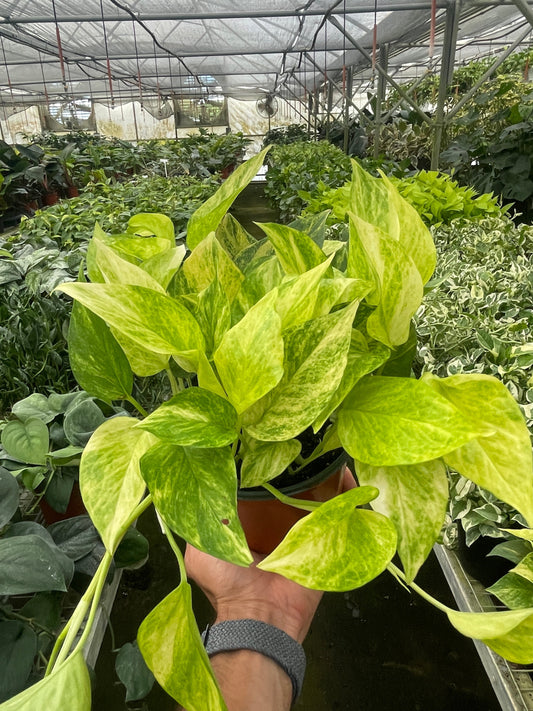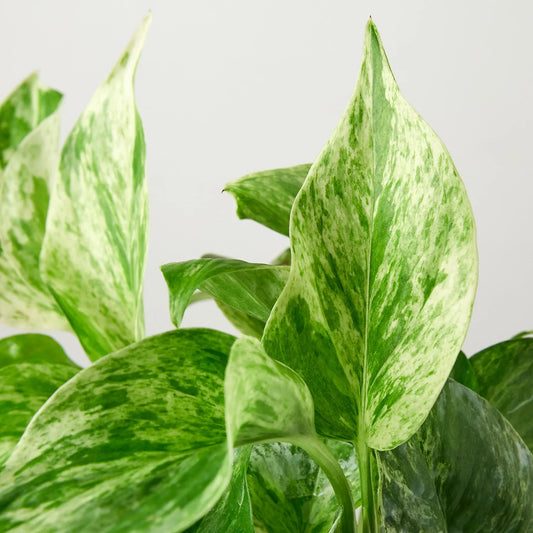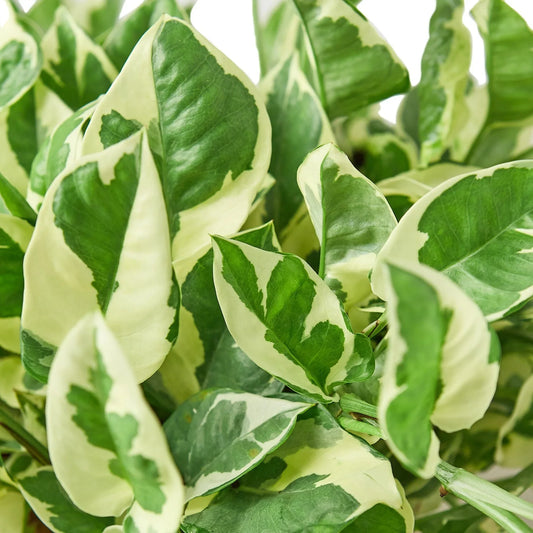Can You Grow A Cactus Outdoors?
Cafe Planta Team
Have you ever admired the unique shapes and resilience of cacti and wondered if they could thrive in your outdoor garden? These prickly plants are often associated with arid deserts, but they can be surprisingly adaptable. Growing cacti outdoors can be rewarding, adding a touch of the exotic to your landscape.
In this article, we'll dive into the world of outdoor cacti cultivation. We'll explore the factors to consider when growing cacti outside, including climate, soil, and care requirements. By the end, you'll have a solid understanding of how to successfully grow these fascinating plants in your backyard.
Understanding Your Climate
The first thing to consider when thinking about planting cacti outdoors is your local climate. Cacti are renowned for their ability to thrive in hot, dry environments, but not all cacti are the same. Some species are remarkably tolerant of different conditions, while others are more delicate.
In general, cacti prefer climates that mimic their native habitats—think lots of sunlight, minimal rain, and well-draining soil. However, there are cold-hardy varieties that can survive even in areas that experience frost and snow. For instance, the Opuntia species, commonly known as prickly pear, can tolerate temperatures as low as -20°F (-28°C).
Before deciding on which cacti to plant, take a close look at your local weather patterns. Is it usually hot and dry? Do you get a lot of rain or frost during the winter months? Understanding these factors will help you choose the right species for your outdoor garden.
Choosing the Right Cactus
Once you've got a handle on your climate, it’s time to choose the right cactus species. There are thousands of cacti to choose from, each with its own unique characteristics and care requirements. Here are a few popular choices for outdoor growth:
- Prickly Pear (Opuntia): As mentioned, this is an excellent choice for colder climates. It's a hardy plant that offers stunning flowers and edible fruit.
- Barrel Cactus (Ferocactus): Known for its round shape, this cactus is well-suited to hot, arid environments.
- Saguaro (Carnegiea gigantea): Iconic for its towering height and classic cactus look, the saguaro is best suited to regions with little frost.
- Cholla (Cylindropuntia): These have a unique branching structure and are ideal for desert landscaping.
When selecting your cactus, consider factors like sunlight needs, water requirements, and growth size to ensure it fits well within your garden's design and environmental conditions.
Preparing the Soil
Cacti are not fans of heavy, water-retentive soils. In fact, poor drainage is one of the quickest ways to kill a cactus. Therefore, preparing the right soil is crucial for outdoor cactus success.
Most cacti thrive in sandy or rocky soils that allow for quick drainage. You can create the perfect cactus soil by mixing one part potting soil with two parts sand or gravel. This blend mimics the cactus's natural environment and ensures water doesn't linger around the roots, which can lead to rot.
If you're planting in an area with heavy clay soil, consider creating a raised bed or using a rock garden approach to improve drainage. Adding perlite or pumice can also enhance the soil’s aeration and drainage capabilities.
Watering Techniques
One of the most common mistakes in cactus care is overwatering. Cacti have evolved to store water and can go long periods without a drink, making them perfect for low-maintenance gardens.
When growing cacti outdoors, it's important to water deeply but infrequently. During the growing season (spring and summer), you might water your cactus every two to four weeks, depending on rainfall and temperature. In the cooler, dormant months, watering should be reduced significantly, if not stopped altogether.
A good rule of thumb is to let the soil dry out completely between waterings. Stick your finger into the soil to check moisture levels—if it feels dry an inch below the surface, it's time to water. Remember, it's always better to underwater than overwater a cactus.
Sunlight Requirements
Cacti are sun lovers, and most species require plenty of it to thrive. Ideally, they should receive at least six hours of direct sunlight each day. However, too much intense sun, especially in the hottest part of the day, can cause sunburn on the plant’s surface.
If you're introducing new cacti to your garden, gradually acclimate them to their new sunny environment to prevent shock. Start by placing them in a location with filtered sunlight, gradually moving them to full sun over several weeks.
It's also worth noting that some cacti, particularly those native to forest environments, prefer partial shade. Always research your specific cactus species to ensure you’re meeting its sunlight needs.
Protecting from Pests and Diseases
While cacti are generally resilient, they are not immune to pests and diseases. Common culprits include scale insects, mealybugs, and spider mites. These pests can be managed with regular inspections and treatments using insecticidal soap or neem oil.
Fungal infections can also occur, particularly in damp conditions. Ensure your cacti have adequate air circulation and avoid overhead watering to minimize the risk. If you notice any soft spots or discolorations, act quickly by removing affected areas and treating with a fungicide.
Keeping your cacti healthy through proper care and observation is the best way to prevent these issues. Regularly inspect your plants and address any problems promptly to keep them thriving.
Winter Care for Outdoor Cacti
If you live in an area with cold winters, you'll need to take some extra steps to protect your outdoor cacti. While some species are frost-tolerant, others may need extra protection to survive.
- Mulching: A layer of mulch can help insulate the soil and protect the roots from freezing temperatures.
- Wrapping: Use burlap or frost cloths to wrap vulnerable cacti during cold snaps.
- Relocation: For potted cacti, consider bringing them indoors or into a greenhouse during the winter months.
By implementing these strategies, you can help ensure your cacti make it through the winter months unscathed.
Designing with Cacti
Cacti can be a striking addition to any outdoor space, offering a unique aesthetic that blends well with a variety of garden styles. Whether you prefer the minimalist look of a desert landscape or a more eclectic mix of plants, cacti can enhance the beauty of your garden.
Consider using cacti to create focal points or line pathways. Their architectural forms can add structure and interest to your garden design. Additionally, mixing cacti with succulents and other drought-tolerant plants can create a visually appealing and low-maintenance garden.
Don't hesitate to play with different shapes, sizes, and colors to create a vibrant outdoor space that reflects your personal style. With a bit of creativity, cacti can transform your garden into a stunning oasis.
Getting Started with Your Outdoor Cactus Garden
Starting your outdoor cactus garden can be a fulfilling project, whether you're a seasoned plant parent or a budding gardener. Here are some steps to help you get started:
- Research: Spend some time learning about the different cacti species and their specific needs.
- Plan: Design your garden layout, considering factors like sunlight, soil, and space.
- Prepare: Amend your soil as needed and gather necessary materials like mulch and garden tools.
- Plant: Choose healthy cacti from a reputable nursery and plant them according to your plan.
- Maintain: Regularly inspect your cacti for pests and diseases, and adjust your care routine as needed.
With patience and care, your outdoor cactus garden will thrive, bringing beauty and interest to your landscape for years to come.
Final Thoughts
Growing cacti outdoors can be a rewarding endeavor, offering a unique and hardy addition to your garden. By understanding your local climate, choosing the right species, and providing proper care, you can enjoy the beauty of these fascinating plants in your own backyard.
At Cafe Planta, we love sharing our passion for plants with you. Whether you need help selecting the right cactus or have questions about plant care, we're here to help. Reach out to us via email or connect with us on Instagram—we're excited to support your plant journey!



















